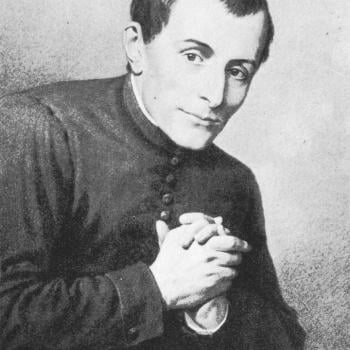 Mantra is one of those Sanskrit words that has worked its way into the English language. Just the way 'guru' is used as a synonym for any expert, as in 'hair guru' or 'fitness guru,' mantra has become a synonym for any slogan or pet phrase, as in "Fiscal responsibility is his mantra."
Mantra is one of those Sanskrit words that has worked its way into the English language. Just the way 'guru' is used as a synonym for any expert, as in 'hair guru' or 'fitness guru,' mantra has become a synonym for any slogan or pet phrase, as in "Fiscal responsibility is his mantra."
But mantra is much more than a slogan. Mantra, when you use it in meditation, is actually a kind of depth charge that can transform the texture of your mind, and positively affect your brain. As research starts to come in about meditation's power to change the brain ("Thirty minutes of meditation for eight weeks makes measurable changes in grey matter density in the hippocampus, an area important for learning and memory," is how the New York Times reported a study recently published in Psychiatry Research: Neuro-Imaging), the question arises of what causes those changes. The short answer seems to be: focused attention. When you keep focused yet relaxed attention over time, bringing the mind back to a single point again and again, it not only strengthens the memory areas, it also decreases the density of the amygdala, the notoriously over-excitable brain area that fires off emotions like anger, anxiety, and fear. The method used in the recent study was mindfulness, a Buddhist technique that asks you to bring attention to the breath, or to different parts of the body, and to keep the mind from wandering. Mantra meditation has the same effect of focusing the mind, and it was the type of meditation used in many of the early studies that showed the positive effect of meditation on health.
The word "mantra" means "a tool for the mind." In early studies of meditation reported in The Relaxation Response, Harvard researcher Herbert Benson had his subjects repeat simple English words like "box," and found them very effective as devices for keeping thoughts from wandering. In Centering Prayer, the Christian contemplative meditation practice, you choose a word that has spiritual associations for you. When I teach meditation, I will often suggest a similar practice, having a student focus in the heart center and think a word or phrase like "Let go" or "Trust" or "I am"—perhaps co-coordinating it with the breath, or simply thinking it from time to time. Little by little, your attention gets drawn away from mundane thoughts by the suggestive power of these words, and flows into a focused, indrawn state—the state where the meditation current can start to catch you.
However, there is another level of mantra, known in all the traditions. In Hinduism, Sufism, and Kabbalistic Judaism, names of the divine have been used for thousands of years as homing devices, ladders of sound that can transform the mind-stuff so that the texture of the mind is literally opened to its divine source. This is mantra as a mystical sound-form, and it's one of the most mysterious and effective practices that the old traditions have given us.
Certain sounds—sounds that exist in all languages, but that are particularly cultivated in the ancient sacred languages like Sanskrit, Hebrew, and Arabic—resonate in the human body in such a way as to shift the vibratory currents in the organs and tissues. Some of these mantras actually have the capacity to engender sacred experience, that is, to open you to a palpable sense of sacred presence.
According to the texts of the Indian tradition, this is because these are articulated sounds that approximate the "unsounded sound," the vibration of the Infinite that throbs in the silence of pure Consciousness. These inner vibrations are far too subtle to be heard by the physical ears or articulated by the tongue. However, the great mantras of different spiritual traditions, heard by sages in deep meditation and then transmitted to their disciples, carry that high, subtle vibration embedded in their syllables. Om is one of those, as is Om Namah Shivaya.
Another is the Tetragrammaton, YHWH. Sometimes used as a mantra in Kabbalistic meditation, it is said to be encoded in the DNA, and to connect a human being to her inborn spiritual essence. Similarly, the breath mantra Hamsa or So'ham, which corresponds to similar mantric sounds found in Hebrew and Arabic, is traditionally believed to be embedded in the subtle cellular structure of the energy system. Such mantras are said to be naturally "awakened," enlivened by the power of Consciousness, because the full power of pure, universal Consciousness is within them. Repeating such an enlivened mantra gradually draws the mind inward, back to the source of the mantra, which is the spaciousness of the original great mind, the deep Self. That is the basic principle of mantra practice.





